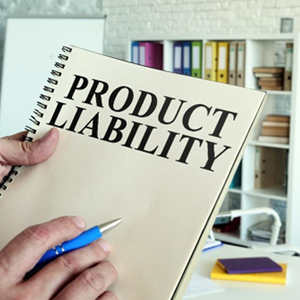
In this article, you can discover:
- Why manufacturers and distributors are held accountable for product-related injuries.
- How to prove a defective product caused your injuries, not your actions.
- The impact of partial consumer responsibility on compensation in product liability.
Who Is Held Liable For My Injuries In A Product Liability Case?
Have you ever wondered who is responsible when a product causes injury? In California, the law of strict product liability casts a wide net. Not just manufacturers, but designers, retailers, and distributors could be held responsible. This means if you’re injured by a defective product, the law ensures that those who made and sold it, not you, bear the responsibility.
However, responsibility isn’t automatic for everyone in the chain. For example, a hotel owner might not be held liable for a defective lamp that causes injury. But generally, if a product you used as intended causes harm due to a defect, those who created and sold it could be on the hook.
How Do I Prove My Case When A Product Turns Harmful?
In order to prove your case after you have been injured by a product, you must first show that the injury was directly caused by the product. Then, you have to prove that the product was faulty. For example, if a blender malfunctions and causes injury while you’re making a smoothie, that’s a classic case. The key is showing you were using the product as it was meant to be used.
When Might I Share Responsibility For A Product-Related Injury?
Sometimes, both you and the product can be at fault. For example, a ladder might collapse because it’s poorly made, but you were also using it improperly. In these cases, both you and the manufacturer might share the blame, which could affect the amount of compensation you receive.
Am I Still Eligible For Compensation If I Was Partially At Fault?
In California, even if you were partly responsible for your injury, you can still claim compensation. However, the amount you receive might be reduced by your share of the blame. Imagine a car accident where a faulty airbag makes things worse. If you’re found partly at fault for the accident, the compensation might be adjusted to reflect that.
How Do The Concepts Of Caveat Emptor And Strict Liability Work In California?
In California, the old idea of ‘buyer beware’ takes a backseat to strict liability. This means manufacturers can’t just wash their hands of responsibility if their product, sold without any need for you to check for faults, ends up being defective.
This covers all sorts of defects – whether in design, manufacturing, or lack of proper warnings. But, there’s a catch. If you’re an expert user – like a professional pilot using an airplane – different rules might apply.
What Is Breach Of Warranty In A Product Liability Case?
Have you ever bought something that didn’t live up to its promises? That’s where a breach of warranty comes in, which is different from negligence or strict liability.
Here, the focus is on whether the product meets the standards promised by the seller or manufacturer. This could be an express promise in a sales agreement or an implied promise that comes with buying the product. However, you typically have to notice and act on this breach within a reasonable time after discovering it. For more information on Proving Liability In A Product Liability Claim, an initial consultation is your next best step.
Get Your Questions Answered. Call For Your
Free 30 Min Evaluation Today! (310) 982-2291